Summarize and share several practical Redis visualization tools
This article summarizes several practical Redis visualization tools to share with everyone. I hope it will be helpful to everyone. Come and collect it!

Without further ado, let’s get started!
1. Command line
##1.1. iredis
Use iredis and use| to redis Use other shell tools through pipe, such as jq/fx/rg/sort/uniq/cut/sed/awk, etc. for processing. It can also auto-complete, highlight, and have many functions. [Related recommendations: Redis Video Tutorial]
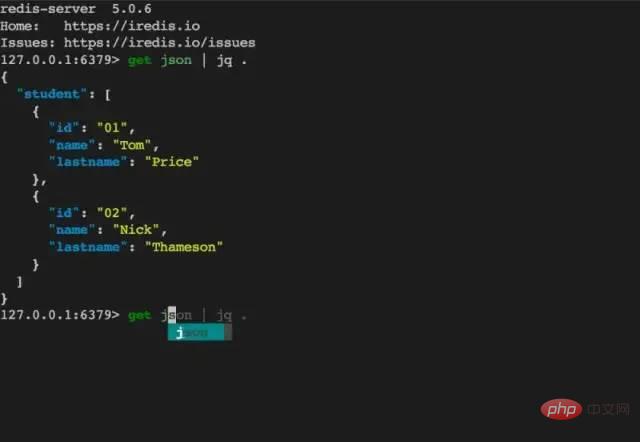
2 , Visualization tool
2.1, Desktop client version
2.1.1, Redis Desktop Manager
This tool should be the most widely used visualization tool now. It has been around for a long time. It went through several iterations. Cross-platform support. It used to be free, but now it's a paid tool. The trial can last for half a month. Official website address: https://redisdesktop.com/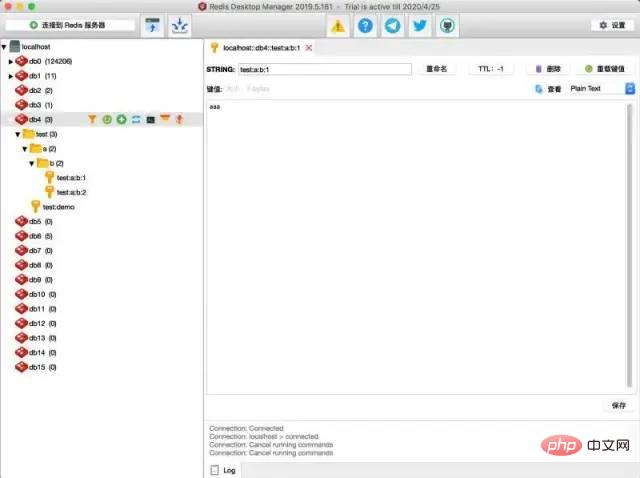
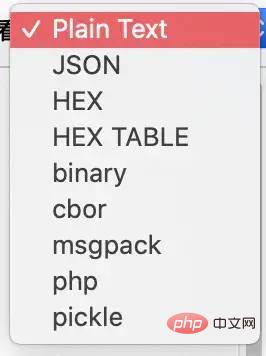

2.1.2, medis
The redis visualization tool I use most at this stage. The interface matches personal aesthetics. The layout is simple. Cross-platform support, the key is free. Official website address: http://getmedis.com/

2.1.3, Another Redis Desktop Manager
One is relatively stable and concise redis UI tool. GitHub address: https://github.com/qishibo/AnotherRedisDesktopManagerGitee address: https://gitee.com/qishibo/AnotherRedisDesktopManager/ 

FastoRedis has not been heard before. Then I went to experience it.
To use this tool, you must first go to the official website to register an account. This software is a paid software. Although it is cross-platform, the trial period is only one day.
Official website address: https://fastoredis.com/
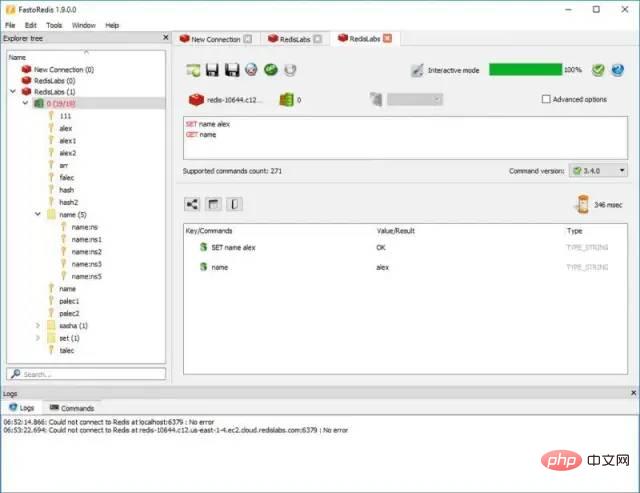 Review:
Review:
is a paid software after all, although the interface is a bit thick Strong Windows style, at first glance it looks a bit like redis desktop manager, but in terms of functionality. It's really good. It supports cluster mode and sentinel mode, key namespace display, and the stream data type of redis 5.0 is also supported.
Command line mode supports automatic prompt completion
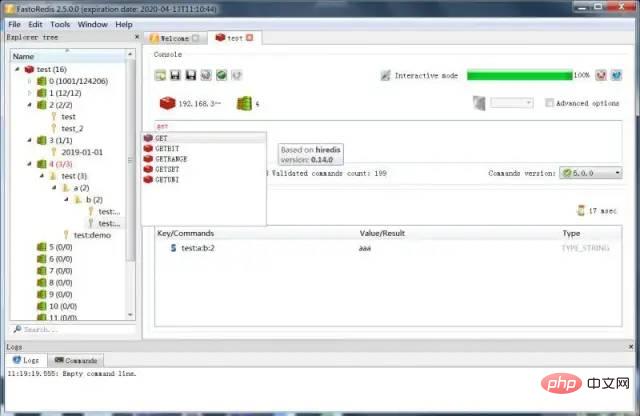
#The display of value supports tree-like, table-like and other display modes. To my surprise, the value object supports up to 17 rendering methods

In general, in addition to the slightly stiff interface UI interaction, it is also a paid software. In addition, it is also a very good redis visualization tool.
2.1.5, RedisPlus
An open source free desktop client software.
Official website address: https://gitee.com/MaxBill/RedisPlus
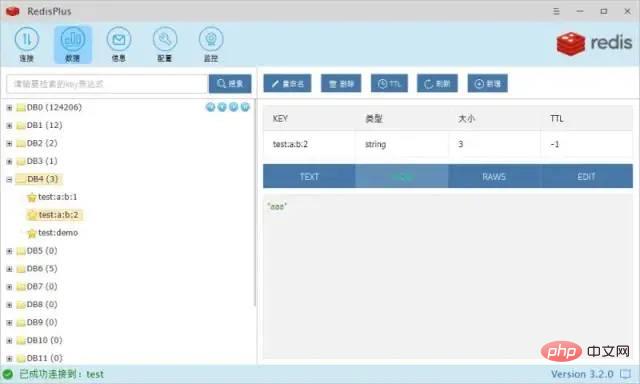
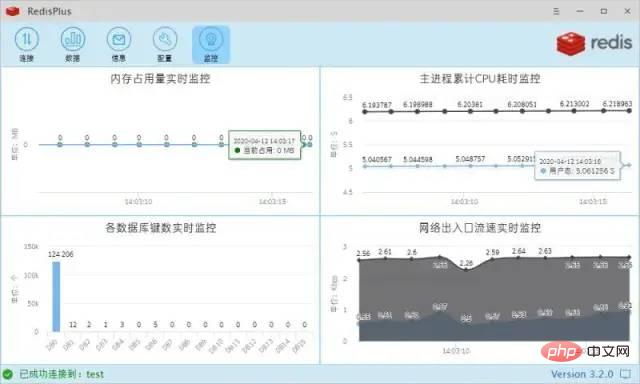
2.1.6, Red
This is a redis visualization tool downloaded from the Apple app store. Mac users can go to the app store and search
2.2. Web version
2.2.1. Redis Insight
This software has a good reputation The big one is a monitoring and analysis-level redis visualization tool produced by redis labs. This software is a web version. What kind of company is redis labs? redis labs was founded in 2011. The company is committed to providing cloud hosting services for popular NoSQL open source databases such as Redis and Memcached. It can be regarded as a professional company dedicated to redis cloud. In the software they provide, in addition to connecting to the enterprise's private redis service, it can also connect to their redis cloud. Official website address: https://redislabs.com/redisinsight/

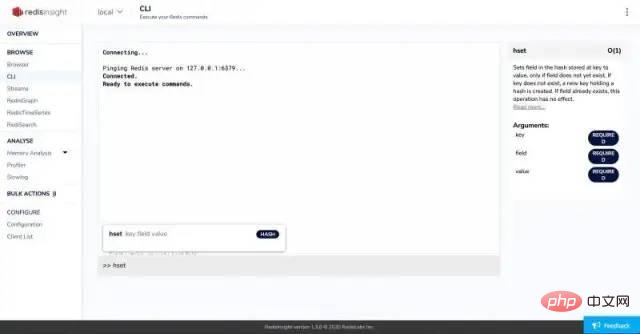
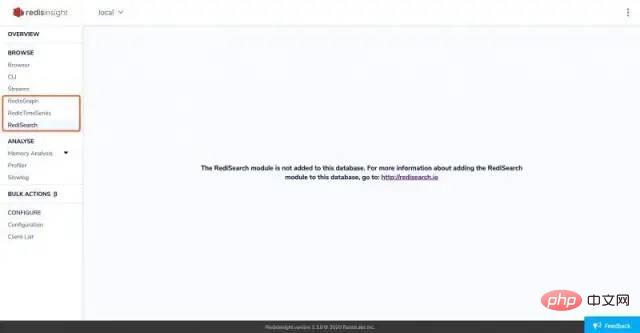
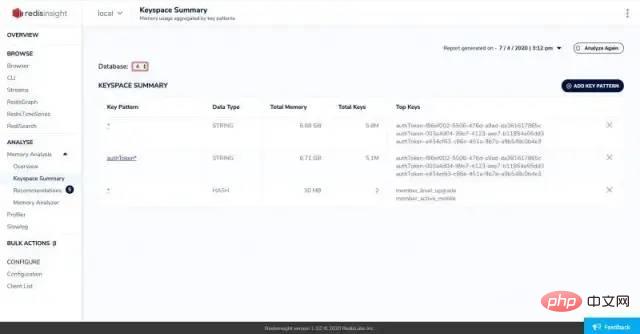

2.3, IDE tool plugin
2.3.1, Iedis2
Iedis is a plug-in based on IntelliJ IDEA. It can be found in IDEA's plug-in market, but it is a paid plug-in. Can be tried for 7 days

Evaluation:
As a plug-in for IDEA, it is of course cross-platform, its style is completely in compliance with IDEA, and its appearance is guaranteed. Functionally, Iedis is also unambiguous. There is basically nothing wrong with the basic query function. Coupled with IDEA's usage habits, you can use it easily without opening additional software. Switching between the code and plug-in windows can also improve efficiency

The biggest feature of this plug-in is that it can support the writing and debugging of Lua scripts, which has never been seen in other software. Arrived. In the past, Lua was used extensively in a business for redis operations. Although I enjoyed the atomicity and performance of redis and Lua, it was a pain when writing and debugging. Because I couldn’t debug, I needed to return a value every time. Let's check what went wrong. Seeing this tool, I regret not discovering this plug-in earlier, and I am willing to pay
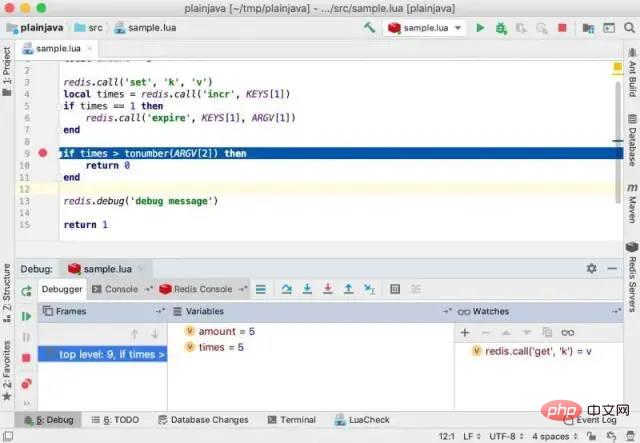
This plug-in also supports slow command viewing
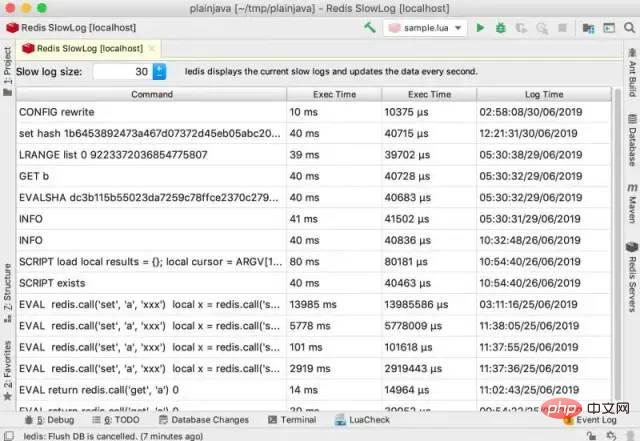
In general, except for the need to pay, everything else about Iedis looks great. price is. . . $139/year. It’s still US dollars. When you see this price, don’t you let out a sigh of relief.
3. Summary
Regarding the several redis visualization tools introduced earlier, I hope that everyone can choose good tools in daily development and solve them with the fastest efficiency. The most complicated thing.
For more programming-related knowledge, please visit: Introduction to Programming! !
The above is the detailed content of Summarize and share several practical Redis visualization tools. For more information, please follow other related articles on the PHP Chinese website!

Hot AI Tools

Undresser.AI Undress
AI-powered app for creating realistic nude photos

AI Clothes Remover
Online AI tool for removing clothes from photos.

Undress AI Tool
Undress images for free

Clothoff.io
AI clothes remover

Video Face Swap
Swap faces in any video effortlessly with our completely free AI face swap tool!

Hot Article

Hot Tools

Notepad++7.3.1
Easy-to-use and free code editor

SublimeText3 Chinese version
Chinese version, very easy to use

Zend Studio 13.0.1
Powerful PHP integrated development environment

Dreamweaver CS6
Visual web development tools

SublimeText3 Mac version
God-level code editing software (SublimeText3)

Hot Topics
 1386
1386
 52
52
 How to build the redis cluster mode
Apr 10, 2025 pm 10:15 PM
How to build the redis cluster mode
Apr 10, 2025 pm 10:15 PM
Redis cluster mode deploys Redis instances to multiple servers through sharding, improving scalability and availability. The construction steps are as follows: Create odd Redis instances with different ports; Create 3 sentinel instances, monitor Redis instances and failover; configure sentinel configuration files, add monitoring Redis instance information and failover settings; configure Redis instance configuration files, enable cluster mode and specify the cluster information file path; create nodes.conf file, containing information of each Redis instance; start the cluster, execute the create command to create a cluster and specify the number of replicas; log in to the cluster to execute the CLUSTER INFO command to verify the cluster status; make
 How to clear redis data
Apr 10, 2025 pm 10:06 PM
How to clear redis data
Apr 10, 2025 pm 10:06 PM
How to clear Redis data: Use the FLUSHALL command to clear all key values. Use the FLUSHDB command to clear the key value of the currently selected database. Use SELECT to switch databases, and then use FLUSHDB to clear multiple databases. Use the DEL command to delete a specific key. Use the redis-cli tool to clear the data.
 How to read redis queue
Apr 10, 2025 pm 10:12 PM
How to read redis queue
Apr 10, 2025 pm 10:12 PM
To read a queue from Redis, you need to get the queue name, read the elements using the LPOP command, and process the empty queue. The specific steps are as follows: Get the queue name: name it with the prefix of "queue:" such as "queue:my-queue". Use the LPOP command: Eject the element from the head of the queue and return its value, such as LPOP queue:my-queue. Processing empty queues: If the queue is empty, LPOP returns nil, and you can check whether the queue exists before reading the element.
 How to use the redis command
Apr 10, 2025 pm 08:45 PM
How to use the redis command
Apr 10, 2025 pm 08:45 PM
Using the Redis directive requires the following steps: Open the Redis client. Enter the command (verb key value). Provides the required parameters (varies from instruction to instruction). Press Enter to execute the command. Redis returns a response indicating the result of the operation (usually OK or -ERR).
 How to use redis lock
Apr 10, 2025 pm 08:39 PM
How to use redis lock
Apr 10, 2025 pm 08:39 PM
Using Redis to lock operations requires obtaining the lock through the SETNX command, and then using the EXPIRE command to set the expiration time. The specific steps are: (1) Use the SETNX command to try to set a key-value pair; (2) Use the EXPIRE command to set the expiration time for the lock; (3) Use the DEL command to delete the lock when the lock is no longer needed.
 How to read the source code of redis
Apr 10, 2025 pm 08:27 PM
How to read the source code of redis
Apr 10, 2025 pm 08:27 PM
The best way to understand Redis source code is to go step by step: get familiar with the basics of Redis. Select a specific module or function as the starting point. Start with the entry point of the module or function and view the code line by line. View the code through the function call chain. Be familiar with the underlying data structures used by Redis. Identify the algorithm used by Redis.
 How to solve data loss with redis
Apr 10, 2025 pm 08:24 PM
How to solve data loss with redis
Apr 10, 2025 pm 08:24 PM
Redis data loss causes include memory failures, power outages, human errors, and hardware failures. The solutions are: 1. Store data to disk with RDB or AOF persistence; 2. Copy to multiple servers for high availability; 3. HA with Redis Sentinel or Redis Cluster; 4. Create snapshots to back up data; 5. Implement best practices such as persistence, replication, snapshots, monitoring, and security measures.
 How to use the redis command line
Apr 10, 2025 pm 10:18 PM
How to use the redis command line
Apr 10, 2025 pm 10:18 PM
Use the Redis command line tool (redis-cli) to manage and operate Redis through the following steps: Connect to the server, specify the address and port. Send commands to the server using the command name and parameters. Use the HELP command to view help information for a specific command. Use the QUIT command to exit the command line tool.




